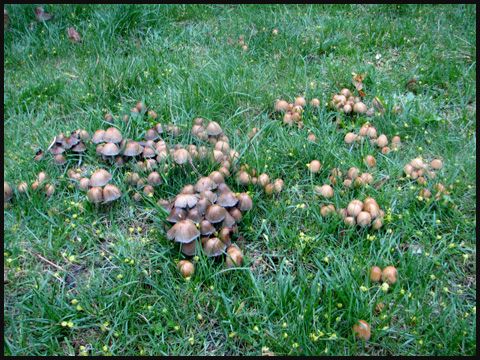100 Species #40: Mica caps

This bloom of mica caps (Coprinellus micaceus) surprised us by appearing quite suddenly in our heavily used side yard.
Mica caps are pretty easy to recognize if you know what to look for: flecks of shiny material on the surface of the cap. It helps if you get to them before the rain washes the clean. Until fairly recently they were in the genus Coprinus, the "inky caps" which turn into black mush as they release their spores. In fact, when they were my 365 urban species #115, I used that scientific name. The revision occurred 5 years before I made my mistake, but news of mycological taxonomic reassignments takes time to spread. In a lecture I attended recently, mycologist Noah Siegel estimated that about 20% of the scientific names used in the most commonly used field guide (Lincoff's Audubon guide) are no longer valid. This is especially troublesome since that guide assigns common names to every species it list, in many cases translating the scientific binomial into English when there was no common name in use.
Mica caps are found everywhere in the world. They grow from dead roots and other wood, colonizing it once it has already been decomposed somewhat by other fungi. Their appearance in our yard suggests that the roots of a long-dead tree are buried beneath the grass.
See an amazing detail photo by cottonmanifesto: http://cottonmanifesto.livejournal.com/1345931.html